Jonelle needs help gardening in Plant City:
“We have about 3.5 acres of lawn-ish, peppered with what we have been told is called bull grass. Our drain field for our septic is covered in Dog fennel, we have been told. It drives my husband crazy, so he has been hacking at it, but it is slow going. I’m not sure what to do about it, since I don’t really want to grow vegetables on my septic… But any ideas of how to get rid of it and prevent it returning would be great.
Our house front door faces west, and the South and East sides of the land are bordered by Lowlands, according to the property appraiser’s office. I would love to figure out if there is anything good already there, or if I can use it to do some food forestry.
I have bought some seeds, see attached, but now I am at a loss as to where to plant them. With lawn, I’m thinking raised beds might be fastest, since we are renting and just moved in Feb 1. I don’t have time to smother the lawn with all our moving boxes. I got a couple pots of herbs : stevia, and a combo pot of basil, oregano, thyme and Parsley. Oh, and I have Everglades tomato seeds on their way.
Any ideas would be welcome. This place has so much potential, I’m drowning. We are also thinking about chickens, (hubby also wants to do rabbits) since there are some kind of pens on the south side of the property, almost in the woods. And I’m considering red wigglers to help compost.”
Well, let’s see what we can do!
Gardening in Plant City
Plant City is the strawberry capital of the world, so there is definitely good agricultural potential there. The climate is mild and supports a wide range of fruit trees and vegetables; however, the summers are quite hot and freezes do sometimes occur in the winter.
Here’s an overhead view of the property:
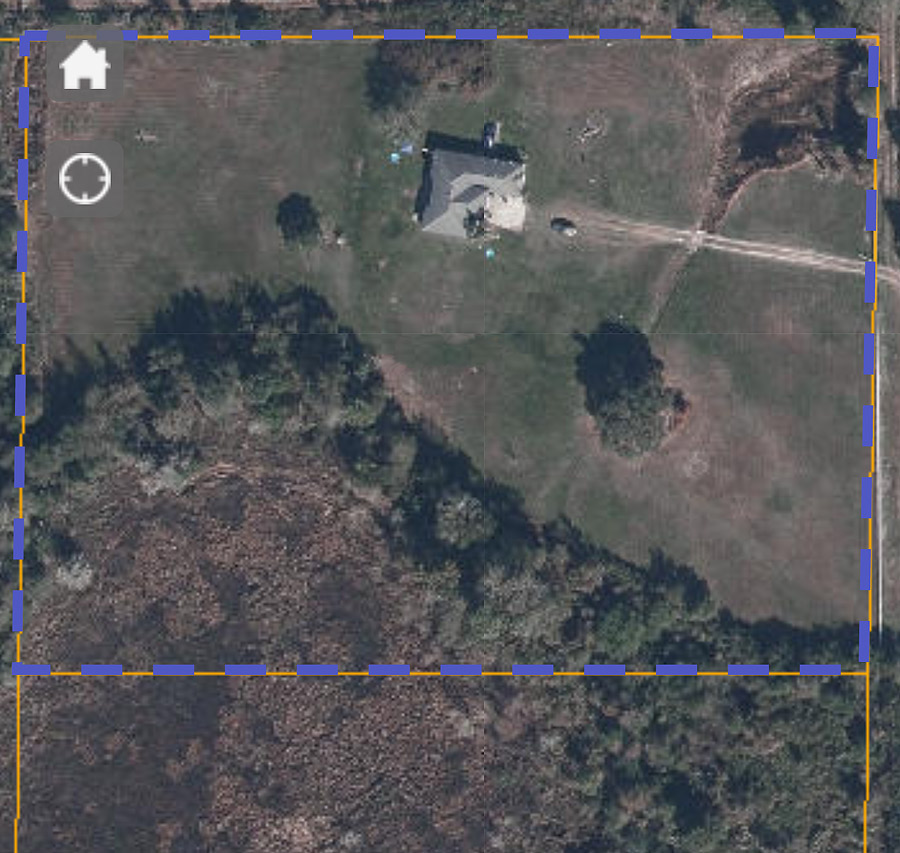
All that bare ground makes for very hot conditions, but as it’s a rental it’s probably not worth adding in some more shade for now.
It’s definitely worth hunting through the woods for useful and edible species.
Chances are there are wild berries, smilax, edible cacti and maybe even some edible and medicinal mushrooms. You could also plant some species but be sure you don’t introduce anything that can mess up the native ecosystem.
Removing Weeds Without Herbicide
If dog fennel is driving you nuts, get yourself a machete and hack them down, then keep the area mowed. Personally, I leave wild patches of dog fennel and other “weeds” on purpose as they provide hiding spaces for beneficial insects as well as forage areas for birds and butterflies.
Lawn is a low-level ecosystem.
Scrubby prairie with a mix of species is better and will keep your nearby gardens healthier.
One way to kill down an area if you want to garden it later: just mow the area and put down some of this woven plastic weed barrier through the summer. In fall, you’ll have a great, clear place to plant. I love that material – it’s much better than regular black plastic and lasts for years and years. It also allows air and rain through but completely suppresses weeds. Put down a strip where you want a garden and let the sun do the rest.
Raised Beds in Florida
I simply loathe raised beds in Florida. They aren’t a good option. They get too hot too quickly, plus they need more watering than in-ground beds. You’re better off just digging a patch of ground to loosen it, then planting there. No borders required.
Like this:
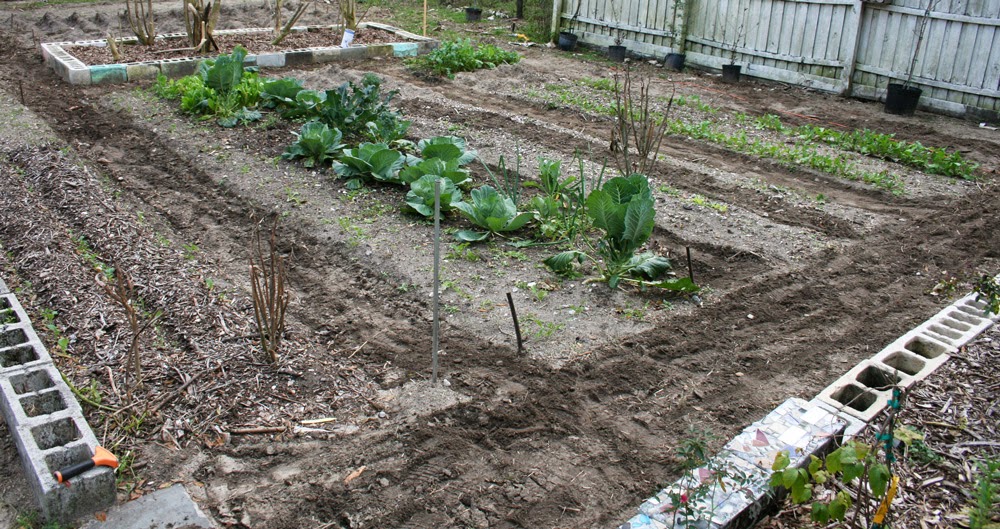
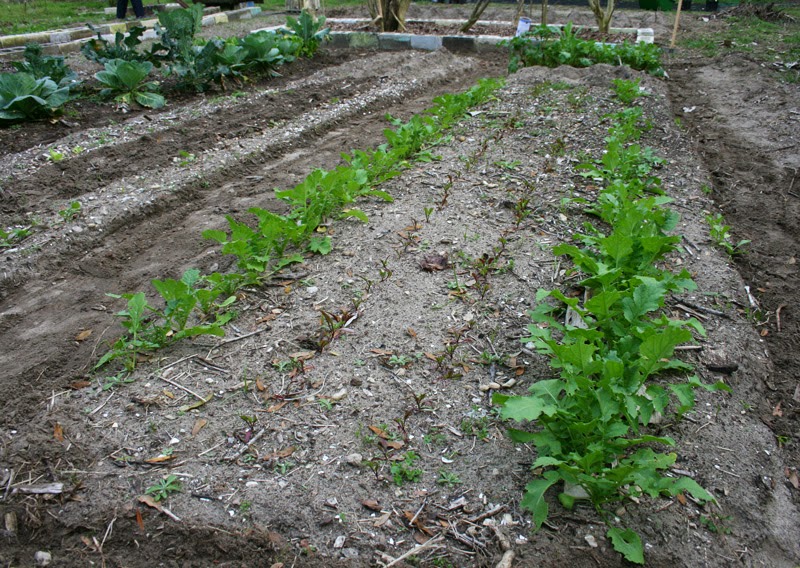
I used cinder blocks to edge my perennial beds but if I had it to do again, I wouldn’t even do that.
What Will Grow
Here are the seeds Jonelle bought for 2017’s gardens:
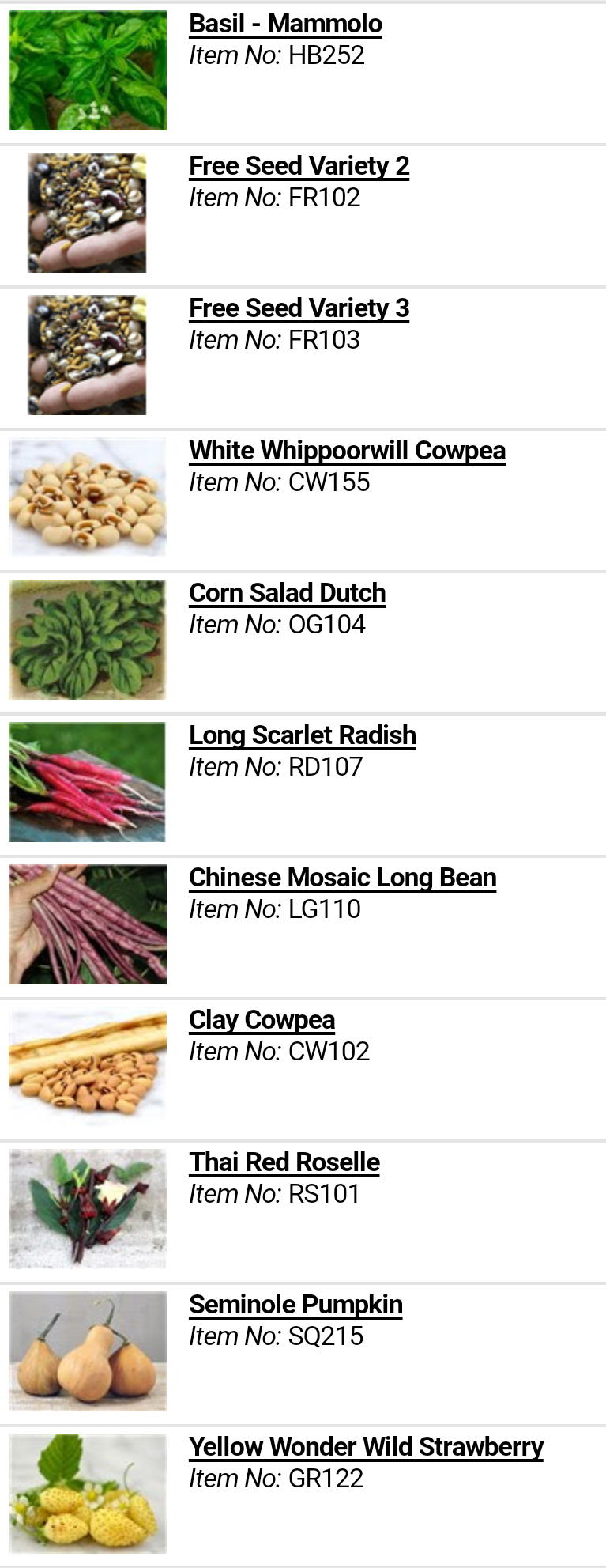
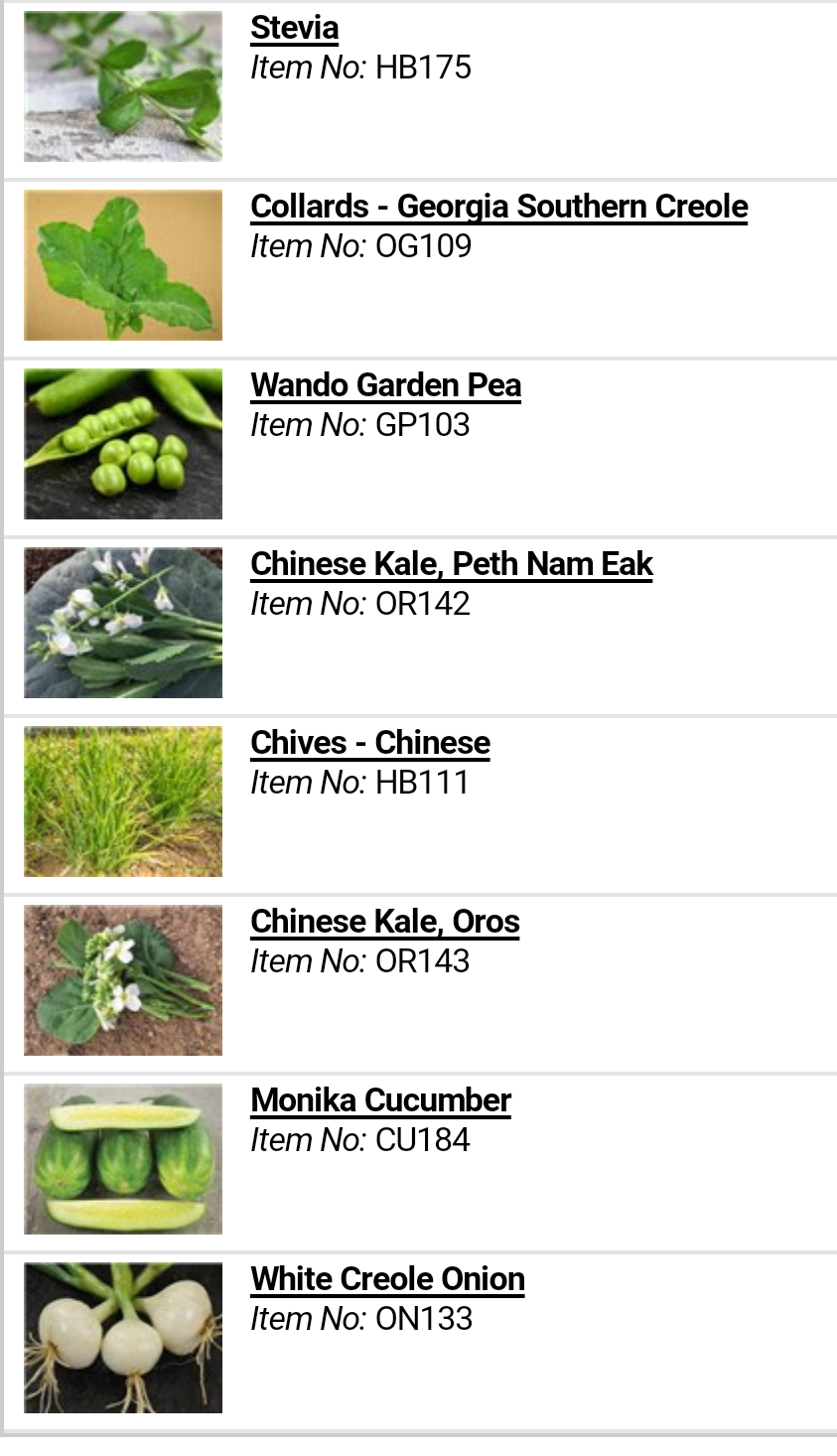
It’s too late to plant most of those selections. The heat will kill almost all of them within the next month or so.
What you can plant now, though, is the long beans and the cowpeas. They’ll sail through the heat. Plant the Roselle as well – it should do fine. You can try Seminole pumpkins but my gut says it’s too late.
Most everything else I would wait until October/November to plant as the heat goes down.
We get two main gardening seasons in Florida: Late winter through spring, then fall through early winter. Some winters you can grow peppers and cucumbers right through by throwing a few sheets over the gardens during the occasional freeze, but other winters get too cold and will kill things off. Plant City is very mild, though, so you can probably push those winters.
Basil and stevia should grow, but keep the stevia well-watered and in part shade. The summer heat really roasts it. Basil is a lot tougher.
I recommend digging some beds through the summer and planting them with cowpeas and peanuts as you finish them, then turning under the plants in fall and growing your gardens on them. Or you can just tarp areas with that landscape fabric and plant them. I am a fan of cover cropping, though, as it keeps the ground alive and adds nitrogen and organic matter.
Livestock
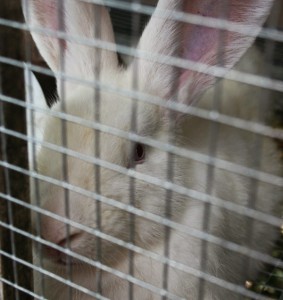 We tried rabbits and I gave up on them. Your husband may do better than we did, though. The maintenance, the random deaths and the infrastructure really was a mess – I was glad to see them go.
We tried rabbits and I gave up on them. Your husband may do better than we did, though. The maintenance, the random deaths and the infrastructure really was a mess – I was glad to see them go.
Chickens are also a pain in Florida as there are a lot of predators. That said, a good, strong coop can keep them safe and happy. I wouldn’t free-range them, though, as they will get killed. Dogs, hawks, owls, possums, foxes, coons, rats… everything likes to eat chicken. Here are my thoughts on housing chickens.
Most of my experiences with keeping livestock have been losses. The fresh eggs and meat are good, but the cost of feed, housing, losses through predation, etc., make the animals more expensive than they’re really worth. Plants have always yielded much better for me. A bed of sweet potatoes doesn’t need much babysitting!
Raising Worms
Now worms? Easy! Too bad they don’t make eggs or (good) meat!
I used to raise mine inside an old dishwasher – you can see how here.
The castings are great, though you need a lot of worms to get enough castings for serious gardening projects. I really enjoyed keeping worms, though, and having them turn kitchen waste into amazingly rich compost.
Final Thoughts
In order to succeed at Florida gardening, you need to learn proper timing for planting, plus make sure you keep the ground constantly fed.
This method works really well in Florida sand:
Just DON’T add any straw, hay or manure, or “garden soil,” or compost from off-site. You need to make your own. Florida is absolutely infested with commercial farmers using toxic long-term herbicides that will utterly destroy your garden for a couple of years. It’s in almost everything now, even bagged manures. Throw some on, and your garden dies. It’s insane. Just read this story from a fellow gardener. I read new reports of dead gardens all the time. It’s better to make your own compost, which is something you can do over the hot months of summer. Pile up all the grass clippings and leaves you get from your yard and let them rot down. If you can get some clay anywhere nearby, add it to your compost piles. It will make the compost “stick” and last a lot longer. Florida compost breaks down really fast without any clay in it.
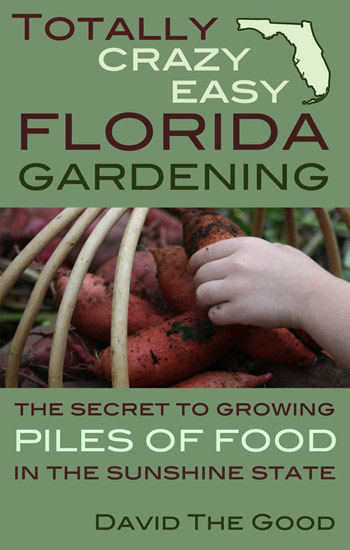 And, finally, have fun. If you don’t have my book Totally Crazy Easy Florida Gardening, buy it. It will give you a huge head start.
And, finally, have fun. If you don’t have my book Totally Crazy Easy Florida Gardening, buy it. It will give you a huge head start.
As Jen wrote in a recent review:
“Just received this book and have already begun going through it & David the Good is so right! So many Florida gardeners have the best of intentions when beginning their garden, but often don’t do as well & get discouraged along the way due to choosing the wrong fruiting/nut trees & plants. This book is well organized, and is a quick & easy read for those of you who don’t love reading. David makes Florida gardening so easy! He has taken the guess work out of gardening–and let’s face it–there’s a lot of guess work if you just go to your local nursery–as there are a lot of trees & plants that will survive in your area–but they won’t thrive–and they certainly won’t provide lots of food. David has done all the legwork for us! He has literally tried to grow just about everything–including trees & plants from other continents–some with much success! David’s book is all about sharing with you what works, to make Florida gardening easy–not a chore you dread! This book will recommend the fruits & veggies that not only survive, but thrive in Florida–with minimal care. If you want to be a successful Florida gardener, you need to get this book! I absolutely love it!“
Good luck, Jonelle, and as always – if you need help, stop on by and ask questions. I’ll keep you growing as best as I can.
*Image at top adapted from a photo by WalterPro4755. CC License.


2 comments
Would my first beds be better located to the South of the house, or the West? Cowpeas, long beans, tomatoes, etc. was thinking of putting the beans against the S wall of the house, but realized that might not be good without rain gutters…do you have a post on garden placement?
I live in the Phoenix, Arizona area, but my sister lives in Plant City. I have been a gardener here for over 50 years, but am getting too old now. My sister is 80 too. She doesn’t garden in Fla., but tells me of good farmer’s markets there. You might meet some neat gardening friends there. Good luck to you.
Comments are closed.